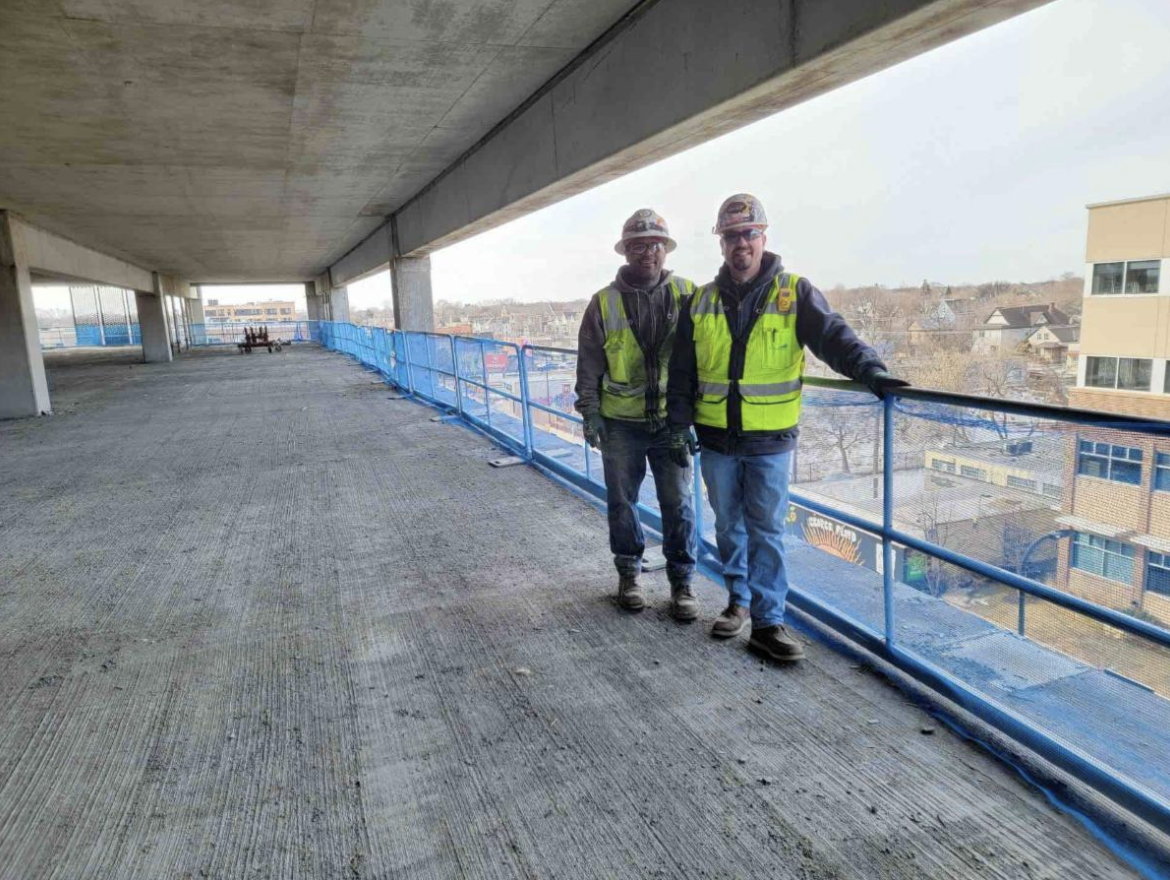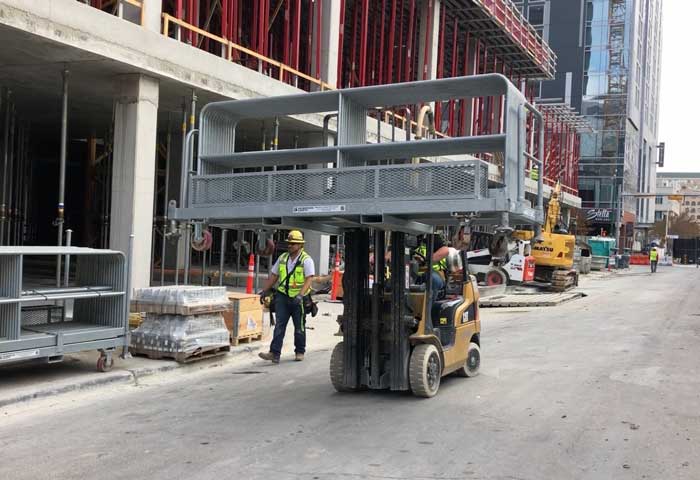Approximately 25 years ago, OSHA instituted the Subpart M Fall Protection Standard for construction workplaces implementing protection from falling objects, falls from tripping over holes, falling through holes, and protection while working around dangerous equipment. Employers were instructed to use fall protection systems such as guardrails, safety nets, or personal fall arrest systems.
As a result of this standard, several manufacturers joined the marketplace in producing yellow powder-coated steel guardrails that today meet OSHA minimum requirements and are commonly specified by engineers and architects for new projects.
How Powder-Coated Guardrails Rust
 The challenge with these lightweight 16–18-gauge steel powder-coated yellow guardrails is that they are only powder-coated on the outside. Powder-coated rails are marketed as durable, but they are raw steel on the inside and are not designed to meet the rigorous construction environments found in today’s marketplace.
The challenge with these lightweight 16–18-gauge steel powder-coated yellow guardrails is that they are only powder-coated on the outside. Powder-coated rails are marketed as durable, but they are raw steel on the inside and are not designed to meet the rigorous construction environments found in today’s marketplace.
Problems occur where the guardrail enters the base. Water can pool from rain, snow, or condensation. What happens when you leave raw steel exposed to wet conditions? It rots! Water creates rust, rust creates holes and then your fall protection system is jeopardized. But you don’t realize this because it is hidden. You can’t see the corrosion unless you pull the pin and lift the guardrail from the base.
Other issues occur when minimal damage chips the paint such as a nick in the paint during hoisting guardrails to the rooftop or a tool inadvertently strikes the guardrail. You’ve now got a chip in the powder-coating causing a significant risk to corrosion.
“As a safety professional I’ve overseen many powder-coated guardrail installations by customer request,” says Deb Hilmerson – President & CEO, Hilmerson Safety, “and then two years later visited the job site for a safety inspection to see visible rust and corrosion on the two-year old guardrails. I learned very quickly to always recommend hot-dipped galvanized guardrails over powder-coated.”
 Hot Dipped Galvanized Guardrails, Built to Last
Hot Dipped Galvanized Guardrails, Built to Last
As an FYI, there are two kinds of galvanized guardrails: Hot-dipped guardrails inside and out, like the Hilmerson Safety Rail System™, and pre-galvanized guardrails.
With hot-dipped guardrails, weep holes are pre-punched into the guardrail and the guardrail is then submerged in zinc and coated inside and out. The benefit: this is the most durable and long lasting guardrail in the marketplace.
Pre-galvanized guardrails are built from pre-purchased pipe that is galvanized on the outside only.
Many companies purchase steel guardrail systems based on meeting the minimum OSHA requirement and price. But they do not take into consideration that if they purchase a powder-coated system it may be 2, 5 or 10 years, depending on its conditions and quality of powder-coating before it needs replacement. Hot-dipped galvanized systems can be up to 20% more expensive but can last five times as long or more.
Industry expert tip:
“Invest wisely. Buy your steel guardrail system right the first time. Buy it for durability. Buy it for longevity. Buy it because it exceeds OSHA standards.” says Hilmerson.
Progressive Field Renovation – Cleveland, OH
Baseball Stadium Renovation Hilmerson’s safety rail, barrier fence and free-standing fence systems are securing and protecting Cleveland’s Progressive Field renovation. Mortenson, a leading general contractor, spearheaded the project in Cleveland, Ohio, with a vision
Revolutionizing Fall Protection: How Hilmerson Met a Growing Need for Henry Carlson Construction
In the world of construction, safety is paramount. Ensuring the well-being of workers and trade contractors during the construction process requires innovative solutions that not only meet safety standards but also streamline processes and
Ryan Tower – Plano, TX
23-story multi-tenant Class AA office tower. The 409,000-square-foot tower is located in the heart of Legacy West, a lush urban destination lined with retail, dining, residential, hotel and office spaces. Rendering sourced from Ryan
About Hilmerson Safety
Hilmerson Safety® is a full-service safety product design and manufacturing company serving the construction industry. Since 2001 Hilmerson Safety® has been working with construction industry leaders and contractors to develop safe, lean, construction-grade™ products and solutions that add to the company’s bottom line.
For more information email us or call (952) 239-0125







